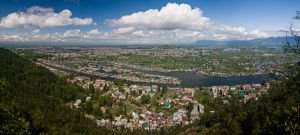Jammu and Kashmir (union territory)


Jammu and Kashmir is a region located in northern India. It is renowned for its picturesque landscapes, including the Himalayas, lush green valleys, and serene lakes. Jammu and Kashmir became a union territory of India on 31 October 2019, following the reorganization of the erstwhile state into two union territories: Jammu and Kashmir and Ladakh.
History
Jammu and Kashmir has a rich and complex history, shaped by its strategic location and cultural diversity. Historically, it was ruled by various dynasties, including the Mughals, Sikhs, and the Dogra dynasty. In 1947, during the Partition of India, Jammu and Kashmir became a princely state under Hari Singh. The state later acceded to India after the signing of the Instrument of Accession.
Geography
Jammu and Kashmir is characterized by diverse geographical features, including:
- The Pir Panjal range in Jammu
- The fertile valleys of Kashmir
- The rugged terrain of Ladakh (now a separate union territory)
The region is bordered by Himachal Pradesh and Punjab to the south, Pakistan-administered Kashmir to the west, and China to the northeast.
Economy
The economy of Jammu and Kashmir is driven by:
- Tourism, especially to places like Gulmarg, Pahalgam, and Dal Lake
- Agriculture, particularly saffron and apple production
- Handicrafts, including Kashmiri shawls and carpets
Culture
The culture of Jammu and Kashmir is an amalgamation of Hindu, Muslim, and Buddhist traditions. The region is known for its traditional music, cuisine, and handicrafts.
Administrative Divisions
Jammu and Kashmir is divided into two regions:
- Jammu Division, the winter capital
- Kashmir Valley, the summer capital
The union territory is governed by a Lieutenant Governor appointed by the Government
